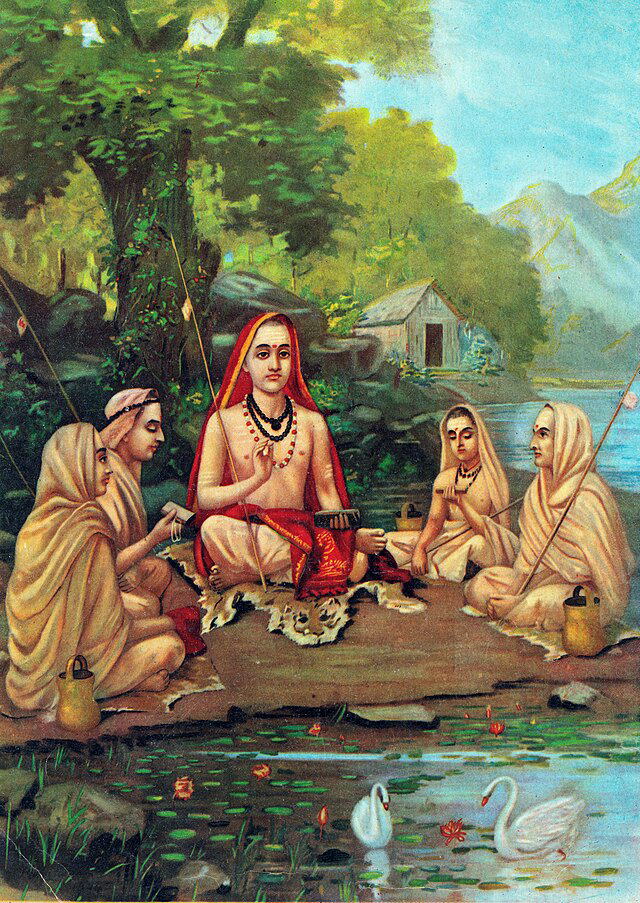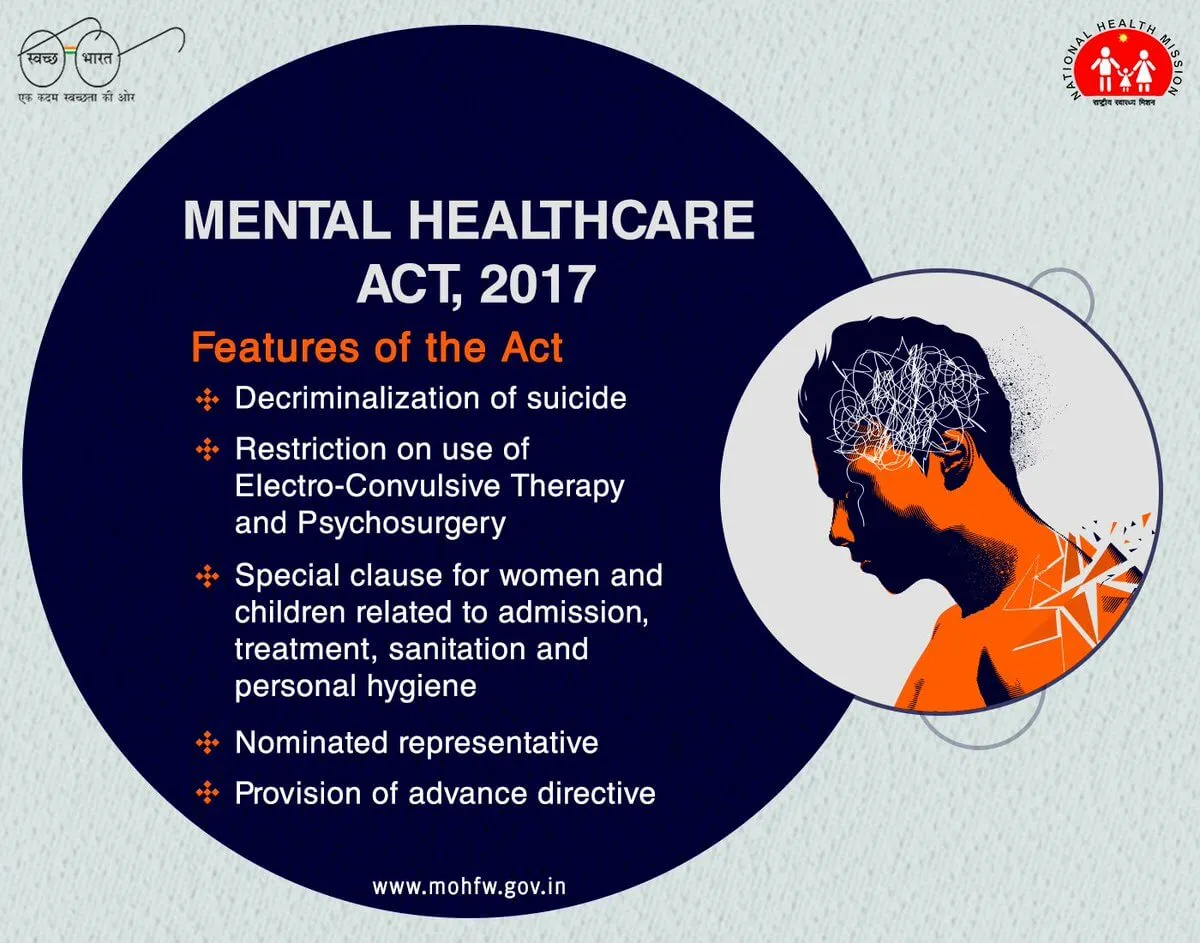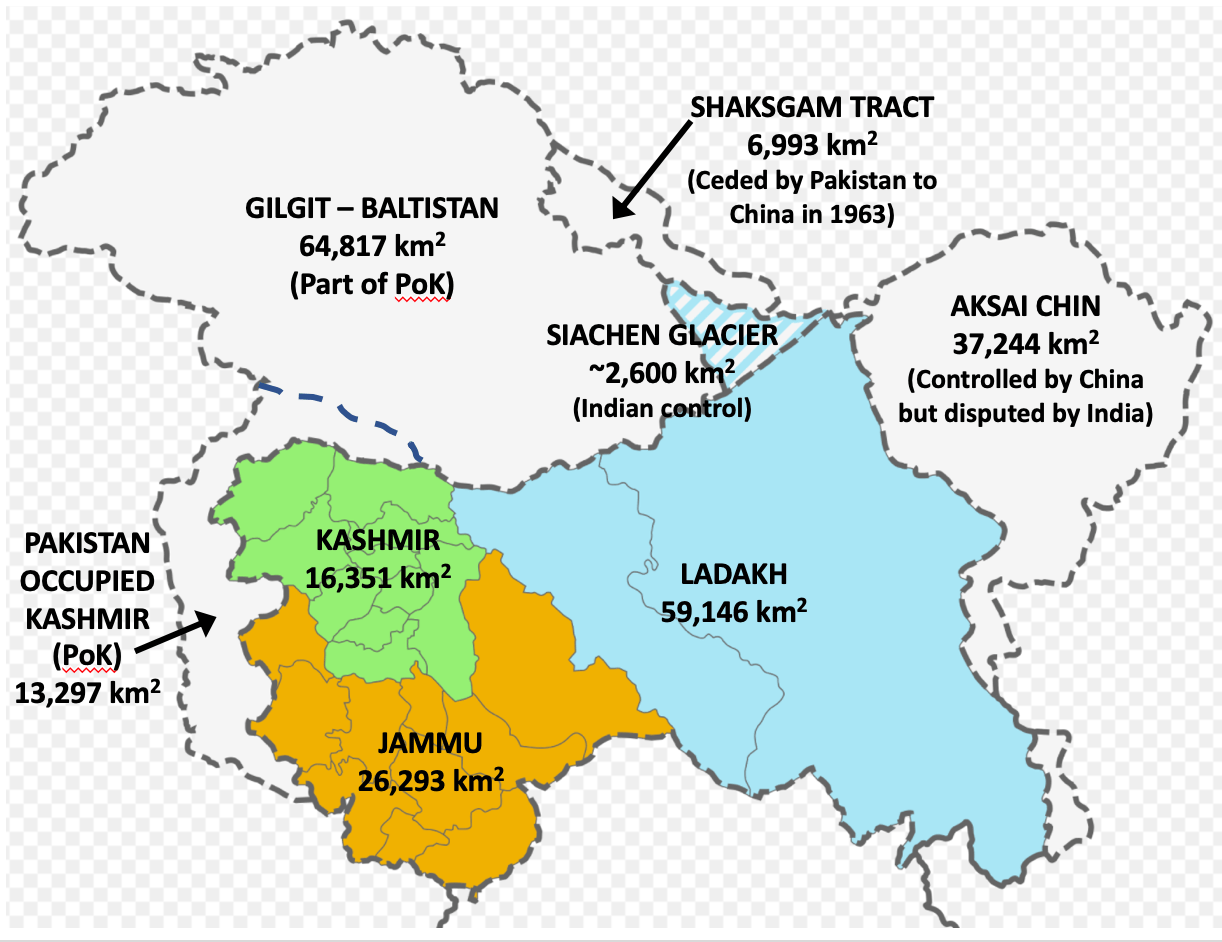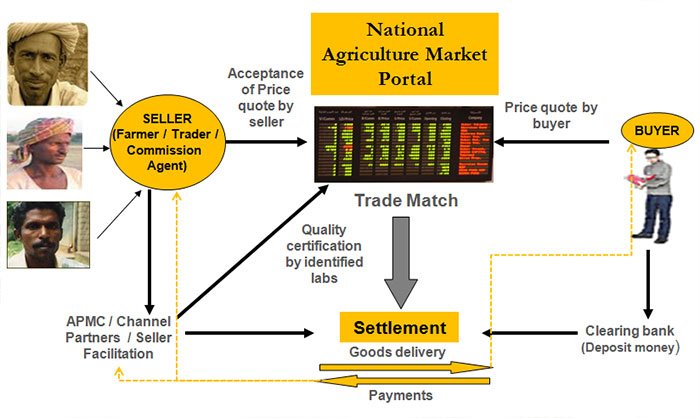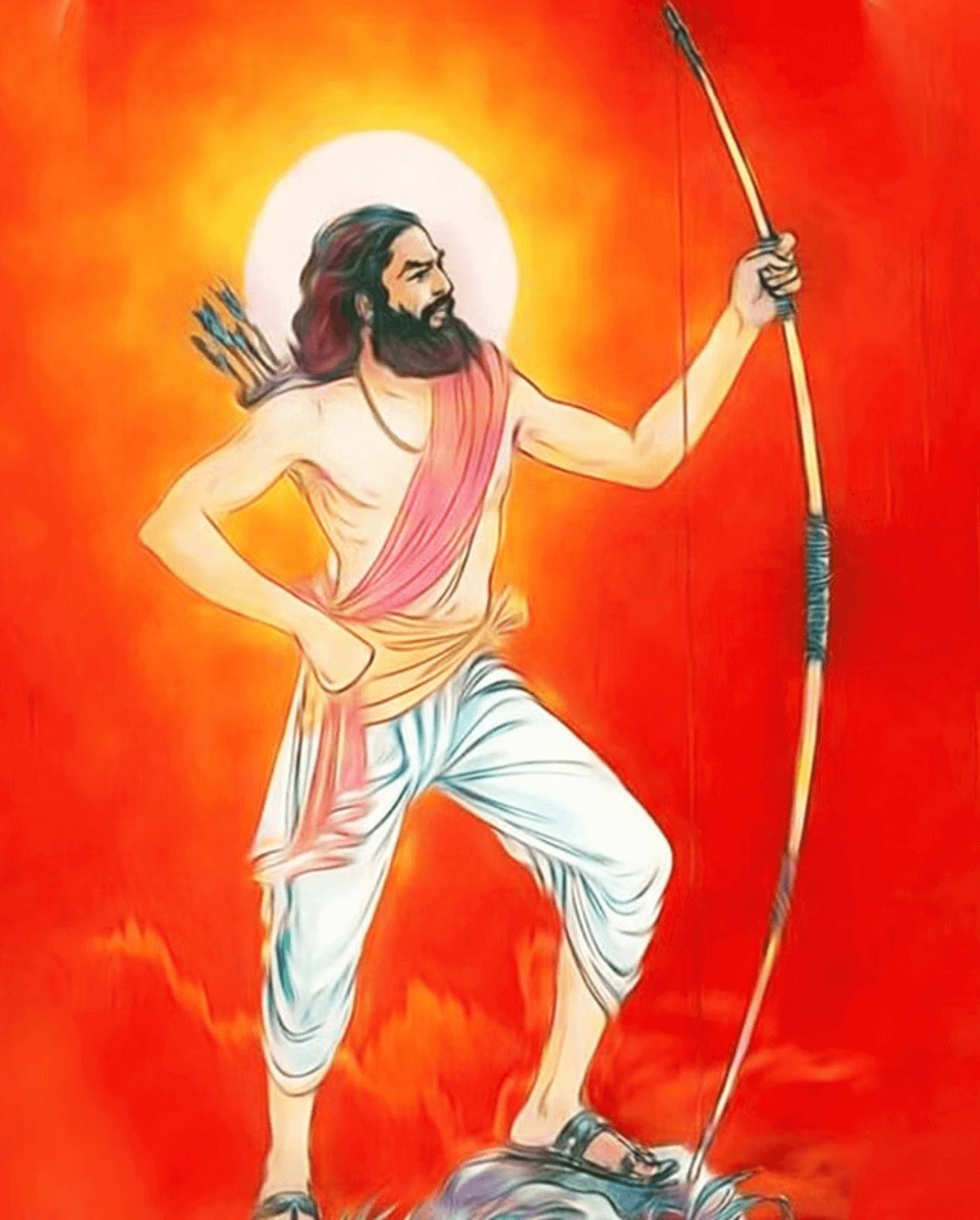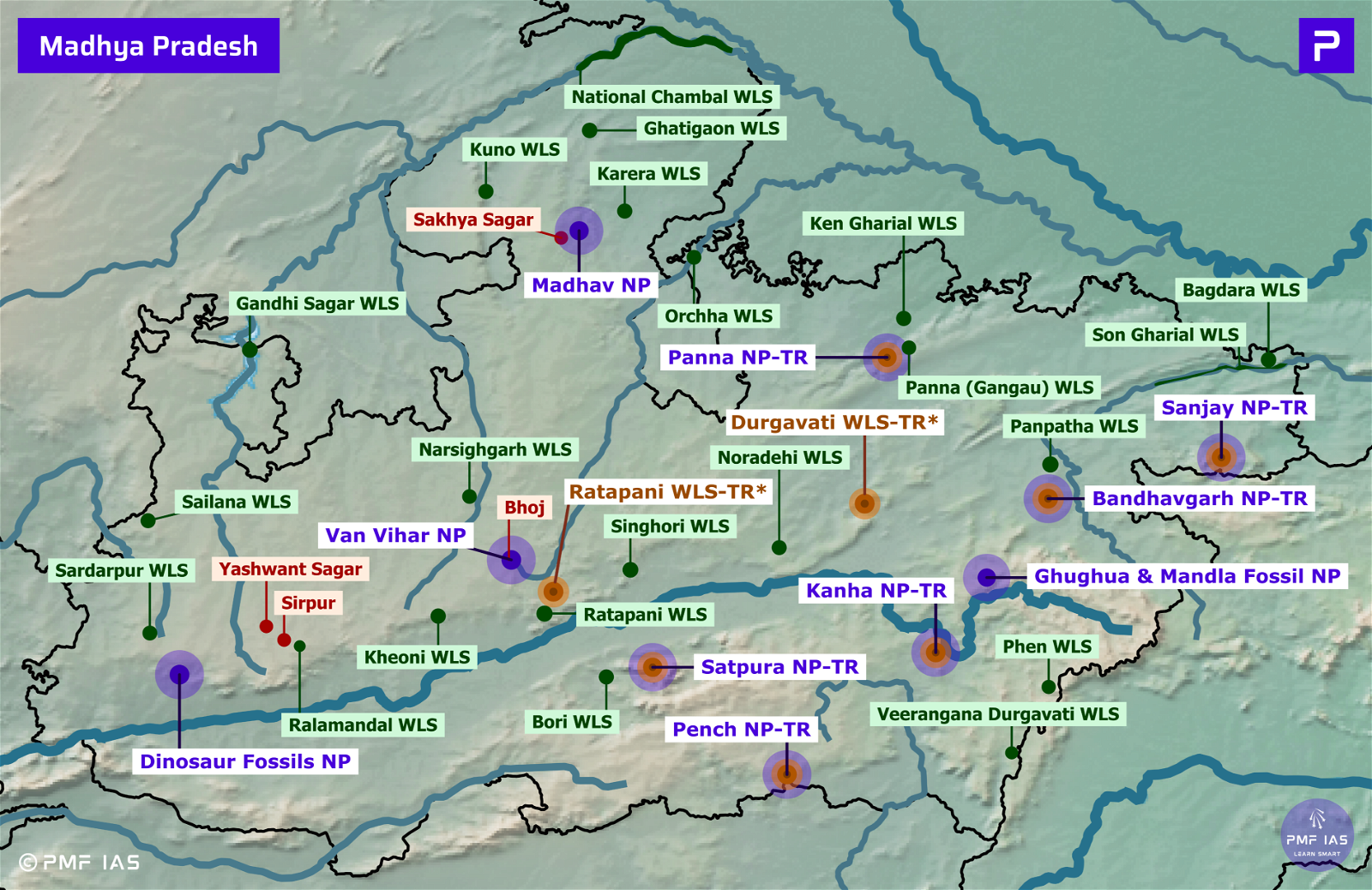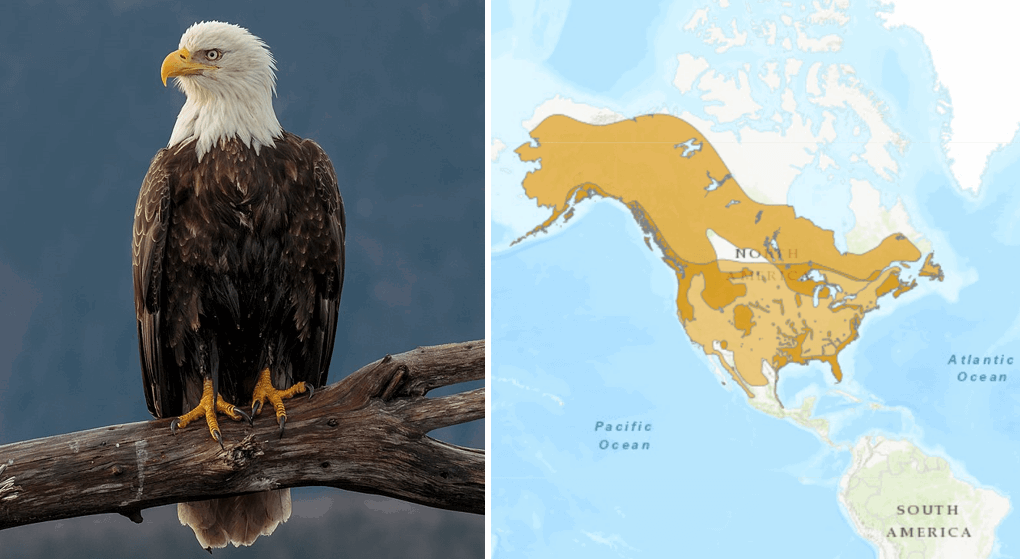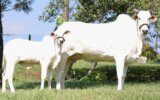
Current Affairs February 08, 2024: Centre-State Financial Relations, Atmospheric Rivers | Pineapple Express, India suspends FMR with Myanmar, Annual Survey of Industries, Black Necked Crane, SMART Food Grain Storage System Technology
Subscribers of "Current Affairs" course can Download Daily Current Affairs in PDF/DOC
Subscribe to Never Miss an Important Update! Assured Discounts on New Products!
Must Join PMF IAS Telegram Channel & PMF IAS History Telegram Channel
{GS1 – Geo – PG – Climatology} Atmospheric Rivers | Pineapple Express
- Context (IE): The recent storm that hit California was fuelled by an atmospheric river, including the Pineapple Express.
- It marks the second atmospheric river event to affect California recently, following another system that caused significant rainfall and snow in the San Francisco Bay Area.
Atmospheric River
- An atmospheric river is a long, relatively narrow band of water vapour that forms over an ocean and flows through the sky, transporting moisture from the tropics to northern latitudes.
- They are formed by winds associated with cyclones and move under the influence of other weather patterns.
- It ranges from 250-375 miles in width.
- While many atmospheric river events are weak, powerful ones can carry extraordinary amounts of moisture.
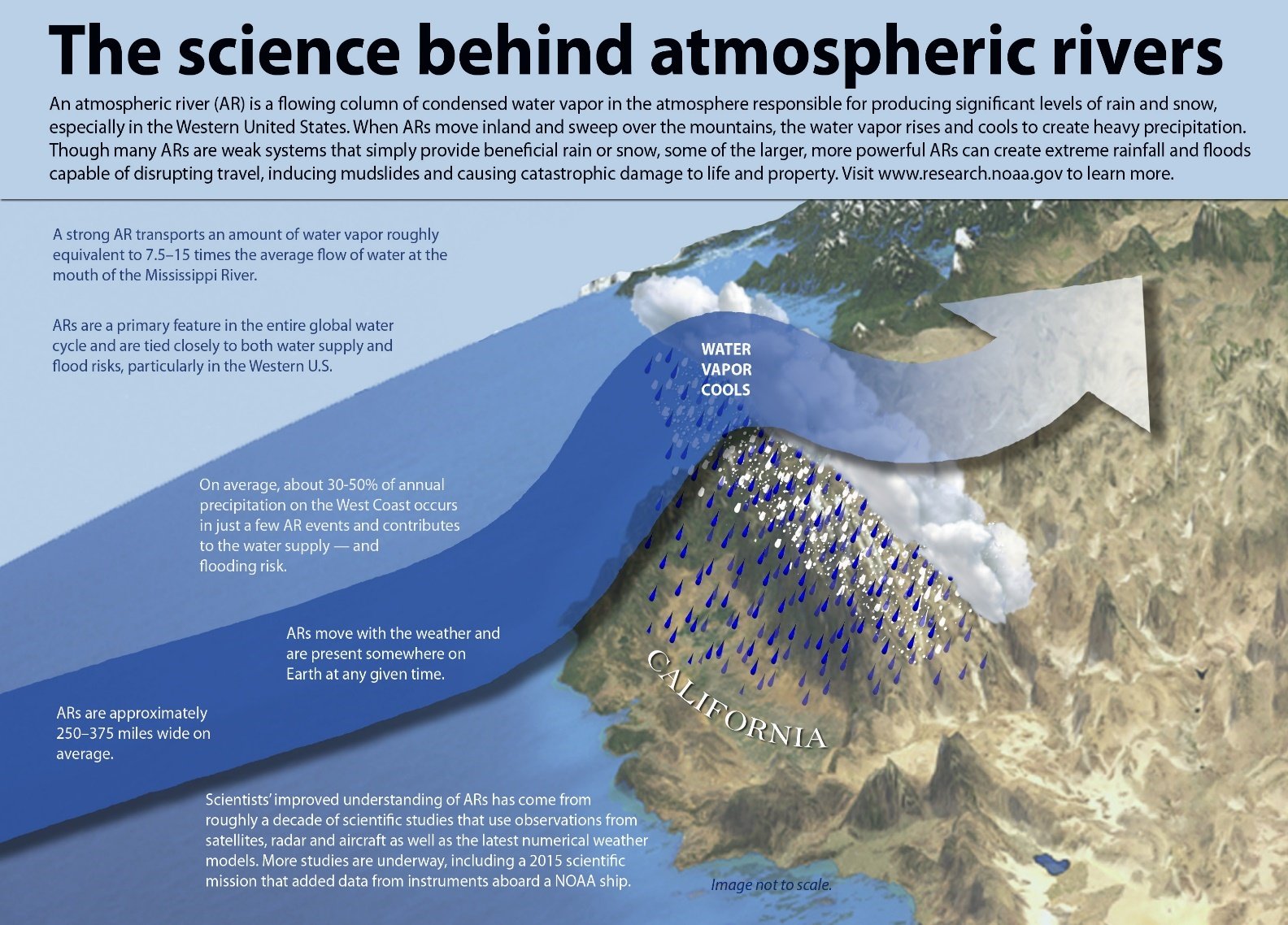
When an Atmospheric River Reaches the Land

- As the moisture-laden air moves over mountain ranges, the water vapour rises and cools.
- This cooling results in heavy precipitation that falls as rain or snow.
- Unlike traditional cold winter storms, atmospheric rivers tend to be warm.
- While snow may still fall at the highest elevations, rain usually falls on the snowpack at lower elevations.
- This rapid melting can lead to runoff, flooding, and a decrease in the snowpack needed for California’s water supply.
Uses of Atmospheric Rivers
- Replenish Water: Essential for refilling water sources in arid regions.
- Wildfire Mitigation: Provide rainfall to help extinguish wildfires.
Impacts of Atmospheric Rivers
- Causes significant flooding, especially after consecutive events.
- Trigger debris flows and mudslides in saturated areas.
- Boost snowpack levels, crucial for water supply.
- Impact global ecosystems and water balance.
|
Pineapple Express
- The term “Pineapple Express” refers to a strong atmospheric river originating in the tropical Pacific near Hawaii.
- When the Pineapple Express reaches the West Coast, it can bring intense rainfall, sometimes dumping as much as five inches of rain on California in a single day.
| It is named for its moisture trail extending to Hawaii’s pineapple region. |
{GS2 – IR – Groupings} South Asia Subregional Economic Cooperation
- Context (TOI): PM laid the foundation stone of multiple road upgradation projects under the South Asia Subregional Economic Cooperation (SASEC) Corridor Connectivity.
- He also laid the foundation stone of Maa Kamakhya Divya Pariyojana (Maa Kamakhya Access Corridor) (sanctioned under the Prime Minister’s Development Initiative for North-Eastern Region (PM-DevINE) scheme.
- SASEC was founded in 2001. It is a project-based partnership aimed at boosting intraregional trade and cooperation in South Asia.
- Member States: Bangladesh, Bhutan, India, Maldives, Myanmar, Nepal, and Sri Lanka.
- Secretariat: Manila, Philippines-based Asian Development Bank (ADB).
- Objective: To promote regional prosperity by improving cross-border connectivity, boosting trade among member countries, and strengthening regional economic cooperation.
- Four main SASEC sectors: Transport, trade facilitation, energy, and economic corridor development.
{GS2 – IR – India-Myanmar} India suspends FMR with Myanmar
- Context (TH | IE): India suspends the Free Movement Regime (FMR) with Myanmar.
- Further, to facilitate better surveillance, a patrol track along the border will also be paved.
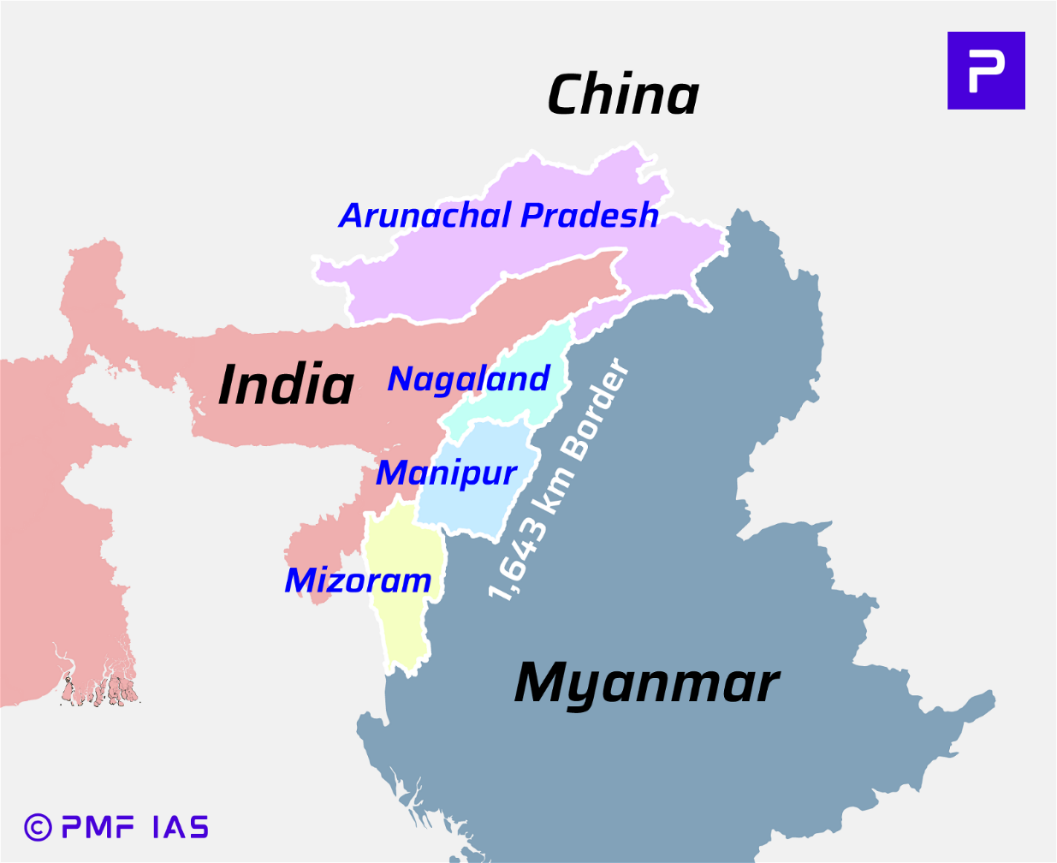
- Indo-Myanmar Border (IMB) is a 1,643 km long border between Myanmar and four Indian states, namely Mizoram, Manipur, Nagaland, and Arunachal Pradesh.
- Border with Myanmar had been predominantly unfenced, except for a small section in Manipur covering approximately 10 km.
- A Free Movement Regime (FMR) used to exist between India and Myanmar.
Free Movement Regime (FMR)
- The FMR is a mutually agreed arrangement between India and Myanmar that allows tribes living along the border on either side to travel up to 16 km to the other side without a visa.
- Under it, every member of the hill tribes, who is either a citizen of India or a citizen of Myanmar and who is a resident of any area within 16 km on either side of the border can cross over on production of a border pass with one-year validity and can stay up to two weeks.
- It was implemented in 2018 as part of the GoI’s Act East policy.
- The Manipur government has suspended the FMR since 2020, post-COVID-19 pandemic.
Why was FMR started?
- The British demarcated the border between India and Myanmar in 1826.
- The British did not seek the people’s opinion in the region.
- The border effectively divided people of the same ethnicity and culture into two nations.
- FMR was conceptualised:
- To facilitate people-to-people contact.
- To provide impetus to local trade and business.
Issues with FMR?
- The illegal migration of tribal Kuki-Chin peoples into India from Myanmar is one of the key issues in the ongoing Manipur conflict.
- It aids illegal immigration, drug trafficking, contraband goods and fake Indian currency notes.
- In Manipur, the aftermath of the military junta’s resurgence in Myanmar in 2021 has seen a notable increase in drug seizures, soaring from nearly 3 tonnes in 2021 to over 10 tonnes within a year.
- Manipur government has alleged that village chiefs have been illegally settling migrants from Myanmar in new villages in the hills, leading to deforestation.
- The border is almost entirely unfenced, and runs through forested and undulating terrain resulting in difficulties in monitoring.
Is ending FMR the only solution?
- According to a paper published by Anuradha Oinam of the Centre for Land Warfare Studies (CLAWS) neither cancelling the FMR nor completely fencing the border is the solution as it could affect livelihoods, education and essential travel for health care.
- Managing and administering the border areas effectively is pertinent for reducing drug trafficking and illegal cross-border movement on unfenced borders.
{GS2 – MoFPI – Schemes} Operation Greens Scheme
- Context (PIB): Under the Long Term Interventions component of the Operation Greens scheme, 53 projects have been approved for eligible crops in identified production clusters.
Operation Greens
- In the Union Budget 2018-19, “Operation Greens” was announced on the line of “Operation Flood”.
- It is a Central Sector Scheme under the Pradhan Mantri Kisan SAMPADA Yojana (PMKSY).
- Nodal Ministry: Ministry of Food Processing Industries (MoFPI).
Components
- The scheme has two components namely:
- Long Term Intervention
- Short Term Intervention
| Components | Details |
| Short-Term Interventions: Price Stabilisation Measures |
|
| Long-Term Integrated: Value Chain Development Projects |
|
Eligible Entities
- Food Processors, FPOs, Co-operative Societies, Individual farmers, Exporters, State Marketing/Co-operative Federation, Retailers etc. engaged in processing/marketing of fruits and vegetables.
Scope
- In 2020, the scope of short-term measures of the scheme was expanded from Tomato, Onion and Potato (TOP) crops to all fruits and vegetables (TOTAL).
- Further, in the Union Budget 2021-22, the scope of long-term interventions, originally applicable to tomato, onion and potatoes (TOP) crops, was enlarged to 22 perishable crops.
- To support its structure, the Agricultural Produce Market Committee (APMC)-promoted markets will link to the e-NAM (National Agriculture Market) platform.
| Category | Crops/Produce |
| Fruits | Mango, Banana, Apple, Pineapple, Orange, Grapes, Aonla/Amla, Pomegranate, Guava, Litchi |
| Vegetables | Tomato, Onion, Potato, Green Peas, Carrot, Cauliflower, Beans, Gourd Family (Bottle Gourd (Loki), Bitter Gourd (Karela), Ridge/Sponge Gourd (Torai), Pointed Gourd (Parval), Ash Gourd (Petha)), Okra, Garlic, Ginger |
| Seafood |
Shrimp |
|
Significance
- It enhances the value realisation of farmers and minimises post-harvest losses in the supply chain of 22 perishable crops.
- It promotes Farmer Producers’ Organisations (FPO) and enhances agri-logistics, processing facilities, and professional agri-produce management.
{GS2 – Polity – IC – Federalism} Centre-State Financial Relations
- Context (IE | IE | TH): Several south Indian states (Karnataka, Kerala) are fighting against the Centre over the distribution of central funds.
What are the concerns of the Karnataka government?
- Significant Reduction in the devolution of taxes: The 15th Finance Commission reduced Karnataka’s share in central taxes from 4.71% to 3.64% (a decrease of 22.5% compared to the 14th Finance Commission). This sharing formula made Karnataka the biggest loser in terms of percentage points.
- 15th Finance Commission (FC) recommendations were rejected by the Centre: The 15th FC recommendations were,
- One-time grant of Rs 5,495 crore for the 2020-21 fiscal year (Suggested in 15th FC 1st report).
- Rs 6,000 crore was recommended for the improvement of water bodies and the peripheral ring road for Bengaluru (Suggested in the 15th FC final report).
- Inadequate GST compensation: Karnataka lost Rs 62,098 cr (2020-21 to 2025-26) however, it was not adequately compensated.
- For instance, in 2017-18, when it was eligible for a compensation of Rs 11,044 cr, GST compensation received from the Centre was a paltry Rs 6,246 cr.

- Issue of Cess and Surcharges: Rs 55,000 cr (2017-18 and 2023-24) were collected using cess and surcharge (only in Karnataka), which are not to be shared with the states and are impacting state revenue.
- Discrepancy in Tax Devolution: States Receive Only 30% Instead of the 41% recommended by the 15th FC.
What are the concerns of the Kerala government?
- Fiscal Shortfall:
- Kerala claims a cut of Rs 57,400 crore in its current fiscal receipts by the Centre.
- Additionally, citing an RBI report, the government claims that it receives only Rs 21 against its own tax collection of every Rs 79. However, as per the statistics of 2021-23, on the national average, the Centre is to provide Rs 35 for every Rs 65 collected by the states.
|
- Goods and Services Tax (GST) compensation issue: Kerala lost a significant revenue source of Rs 12,000 crore this year after the Centre ended the GST compensation.
- Consistent Decrease in the devolution of funds: Kerala’s share in tax devolution during the 10th FC period was 3.87%. This has come down to 2.5% in the 14th FC and to 1.925% in the 15th FC.
- 15th Finance Commission criteria is unfavorable.
- The FC, for deciding the share of taxes for states, sets various parameters and looks at the states’ performances in that regard. (Parameters are mentioned in the diagram)

- But Kerala states that its effective birth control measures (demographic performance) have contributed to the fall in the allocation of central tax.
- The state wants the Centre to consider second-generation development problems, lifestyle diseases, and the growing proportion of elderly in the population.
- Issues regarding Centrally Sponsored Schemes
- Kerala had submitted proposals for financial assistance under the Scheme for Special Assistance for Capital Expenditure, but it did not comply with some norms, particularly branding/naming of five central-sponsored projects in Kerala.
- Kerala is against co-branding of these projects as the state contributes 40 per cent of the share. This results in the delayed transfer of both Capex and Central Share of Centrally Sponsored Schemes.
- Further, Rs 600 crore under the National Health Mission and Rs 2,500 crore under Special Assistance for Capex have not been released so far.
- Unexpected Cut in Borrowing Limits: Under the Centre’s guidelines, Kerala’s approved borrowing limit is Rs 39,626 crore. However, Kerala has been restricted to borrowing only Rs 28,830 crore so far. The borrowing limit was unexpectedly reduced without prior notice.
|
-
Inclusion of off-budget borrowings as state loan
- Kerala has undertaken off-budget borrowings mainly for the Kerala Infrastructure Investment Fund Board (KIIFB) and Kerala Social Security Pension Limited (KSSPL).
- In 2017, the Union Finance Ministry stipulated that all such borrowings of state government entities will also be taken into consideration while setting the state’s borrowing limits.
- Thus, the Kerala budget had to make provisions for repaying the borrowings by KIIFB and KSSPL.
- The inclusion of such off-budget borrowings as the state’s borrowing has, therefore, brought down its net borrowing ceiling.
|
How do states receive income from the central government?
Major Recommendations of the 15th Finance Commission (2021-2026)The Finance Commission is a constitutional body formed by the President of India to give suggestions on centre-state financial relations. The share of states in central taxes
GrantsRevenue deficit grants
Sector-specific grants
State-specific grants
Grants to local bodies
Disaster risk management
Criteria for devolution
Fiscal roadmapFiscal Deficit
Borrowings
Revenue mobilisation
Creation of Fiscal bodies
Health
Funding of defence and internal security
Centrally sponsored schemes (CSS)
|
{GS3 – IE – Industry} Annual Survey of Industries (ASI)
- Context (IE): The Ministry of Statistics and Programme Implementation released the results of the Annual Survey of Industries (ASI) for 2020-21 and 2021-22.
- MoSPI publishes the Annual Survey of Industries (ASI) results based on the annual survey conducted by the National Sample Survey Office (NSSO) for each year.
- It is the principal source of Industrial Statistics in India.
Coverage
- It covers all factories registered under the Factories Act, 1948, Bidi and Cigar Workers (Conditions of Employment) Act 1966.
- All electricity undertakings engaged in the generation, transmission, and distribution of electricity, not registered with the Central Electricity Authority (CEA) are also covered under ASI.
- It covers factories employing 10 or more workers using power and those employing 20 or more workers without power.
- Defence establishments, oil storage and distribution depots, departmental units such as railway workshops, RTC workshops, Govt. Mints, sanitary, water supply, gas storage etc. are excluded from the purview of the survey.
| It is slightly tweaked for the states of Maharashtra and Rajasthan, wherein data is collected for factories employing 20 or more workers with power and factories having 40 or more workers without power. |
Key Findings
- Gross value added grew by 8.8% in 2020-21 (in current prices).
- In both these years, the registered organised manufacturing sector grew at a faster pace than the unorganised sector.
- Industries that drove growth during 2021-22: Basic metal, coke, and refined petroleum products, pharmaceuticals, motor vehicles, and chemicals.
- Profits in the manufacturing sector grew sharply for the pandemic-affected years, rising by 42.3%.
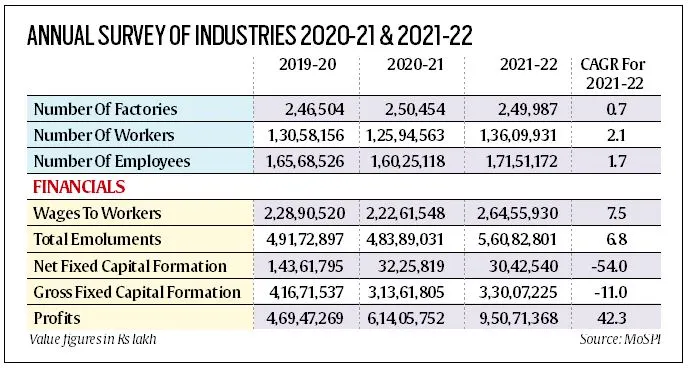
{Prelims – Envi – Species} Black Necked Crane (Grus nigricollis)
- Context (PIB): The Black Necked Crane assessment was recently carried out by the Wildlife Institute of India and the Zoological Survey of India.

- Black-necked crane is a medium-sized crane that is native to Asia and endemic to Tibetan Plateau.
- It is a large, wading bird with long legs and neck. Despite their lack of webbed feet, they are excellent swimmers.
- It is the only exclusively alpine species among the 15 species of cranes in the world.
- This species is found in India, China and Bhutan and breeds in high altitude wetlands in the Tibetan plateau at elevations.
- A small wintering population is also found in Sangti and Zimithang valleys of Arunachal Pradesh.
- Diet: Black-necked cranes are omnivorous, and they enjoy eating plant roots, tubers, snails, shrimp, and other small vertebrates and invertebrates.
- Conservation Status: IUCN: Near Threatened | WPA, 1972: Schedule I | CITES: Appendix I
- The bird is revered by the Monpa Community (major Buddhist ethnic group of Arunachal Pradesh) as an embodiment of the sixth Dalai Lama (Tsangyang Gyatso).
{Prelims – In News} SMART Food Grain Storage System Technology
- Context (ANI): MeitY transfers SMART food grain storage system (SAFEETY) technology to Paras Defense, paving the way for innovation in digital India.
- SAFEETY, developed by the Society for Applied Microwave Electronics Engineering and Research under MeitY’s guidance, boasts cutting-edge features such as conveyorized loading and unloading of grain bags with RFID for traceability, online weight and moisture measurement, etc.
- This state-of-the-art system can efficiently handle almost one truckload (approximately 28 tons) of grains in just 40 minutes.




![PMF IAS Environment for UPSC 2022-23 [paperback] PMF IAS [Nov 30, 2021]…](https://pmfias.b-cdn.net/wp-content/uploads/2024/04/pmfiasenvironmentforupsc2022-23paperbackpmfiasnov302021.jpg)



